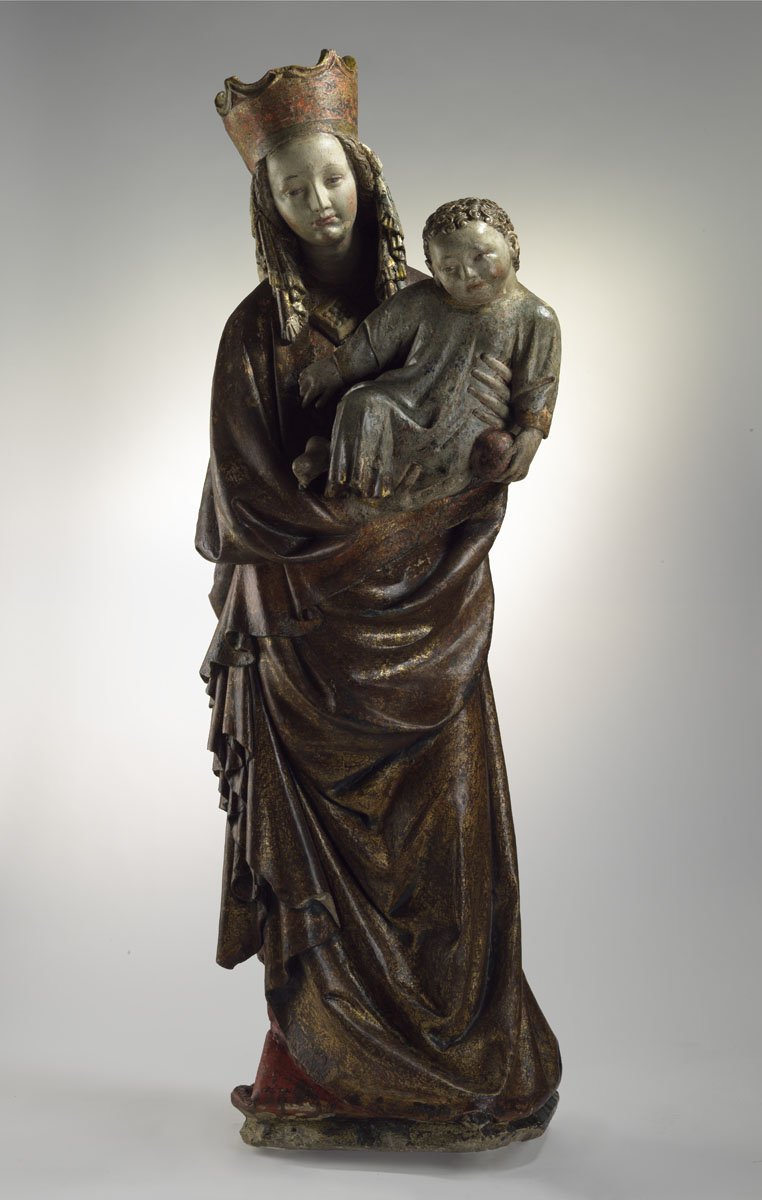
Virgin and Child
Sculptures
| Artist | |
|---|---|
| Culture | Spanish |
| Date | ca. 1600 |
| Object type | sculpture |
| Medium, technique | larch-wood |
| Dimensions | 50 × 43 × 21 cm |
| Inventory number | 51.896 |
| Collection | Sculptures |
| On view | Museum of Fine Arts, First Floor, European Art 1250-1600, Gallery XXIV |
The Virgin gently leans over her dead son: the closed nature of the composition signals spiritual togetherness and unity. Restored in 2014, the sculpture group is comprised of two wooden blocks. Mary’s lower dress and the drapery covering Christ are covered by sgraffito. Here, the foundation of the sgraffito is the gilded surface: the artist etched an ornamental pattern into the paint, thus revealing the golden base. The technique was common throughout Europe between the fifteenth and eighteenth centuries, becoming particularly popular in the Spanish and Netherlandish workshops of the sixteenth century. The reverse and left sides of the work are flat and composed for a view from above, which means it may have stood in a niche. The creator of the work may well have been someone working in the workshop of the master of the altar in the Condestable chapel of the church in Santa Clara de Medina de Pomar (Burgos).
Balogh, Jolán, Katalog der ausländischen Bildwerke des Museums der bildenden Künste in Budapest, IV – XVIII. Jahrhundert: 1. Textband Bd. 1, Akadémiai Kiadó, Budapest, 1975, p. 209., no. 296.
Szmodisné Eszláry, Éva, A Régi Szoborgyűjtemény kincsei, Szépművészeti Múzeum, Budapest, 1994, p. 34, ill. 28.
Szmodisné Eszláry, Éva, The treasures of the Old Sculpture collection, Szépművészeti Múzeum, Budapest, 1994, p. 33-34.
This record is subject to revision due to ongoing research.